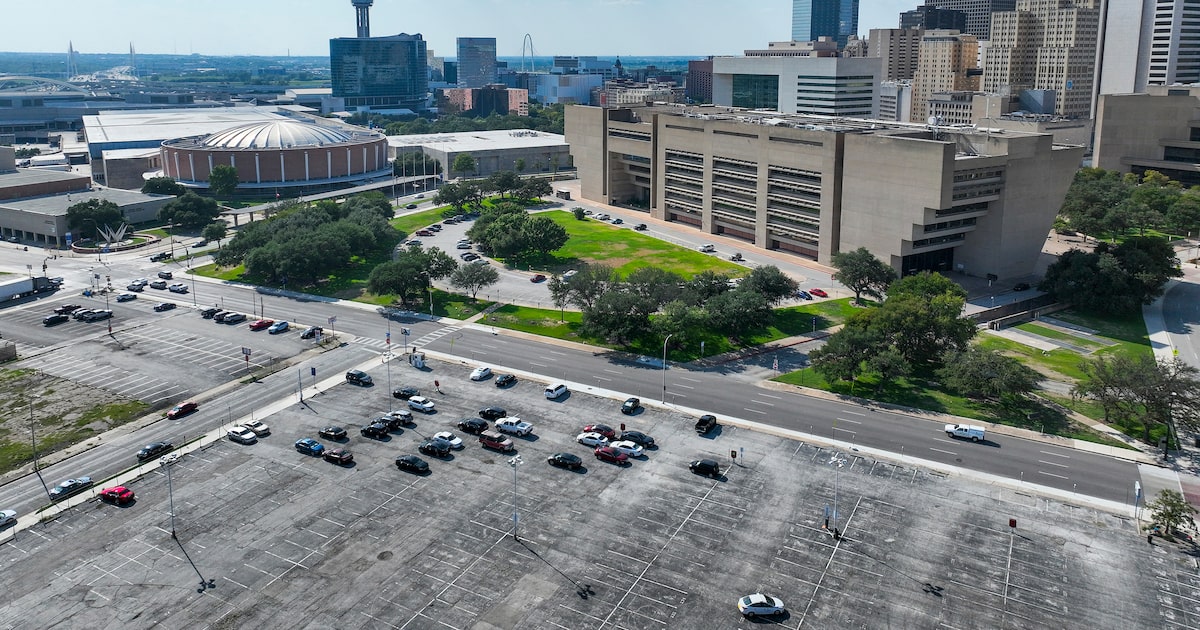Developers stand to gain
Re: “City Hall stands in downtown’s way, developers say — Dallas’ core needs bold action now, including demolition of crumbling structure,” by Lucy Billingsley and Craig Hall, Thursday Opinion.
All those who support demolishing City Hall should answer this directly: What do the people of Dallas actually get as compensation for letting private developers take this property off our hands?
What we stand to lose should be understood fully. City Hall is not just a crumbling office building, or a monument to the architecture of its period. It is a civic space, not restricted to paid subscribers or season ticket holders. It was designed to serve all of us who live in the city, and to represent our shared ambitions and enduring values.
In its current state, it is being dismissed as an expensive burden. But it remains a unique asset which could still fulfill its potential, if we insist on it.
Opinion
Why not remake the plaza into Dallas’ own version of Discovery Green? This could activate development nearby, while drawing people back into City Hall and the library as well. A reimagined civic center district, featuring a restored City Hall, would be a beacon for Dallas. It would once again be a statement to the world of what our city can envision, and achieve, at its best.
Norwood Andrews, East Dallas
City Hall isn’t falling down
The op-ed makes several dubious assertions.
First, despite decades of neglect, the very structure of City Hall is not at risk, and no credible evidence has been presented that it is. Structural problems mentioned relate to the parking garage which is adjacent to, but very different from, City Hall.
Second, the claim that demolition would “unlock billions in private investment” is spurious. A casual drive south and east of City Hall reveals dozens of acres of underutilized land and, when the convention center is reconstructed, 20 additional acres will become available to the west. Whatever is delaying development in the area, it is not a lack of land.
Third, the op-ed claims that relocation would “represent a small fraction” of the cost of renovation, but presents no supporting evidence. In fact, such a relocation would be staggeringly expensive, requiring purchase of a building (approaching 1 million square feet), its renovation and finish-out, securing 2,000-plus parking spaces and relocation of staff and equipment.
The broad, unbacked claims of the op-ed are not useful. Deliberations about the fate of City Hall must be based on public, credible evidence, backed by real numbers.
Robert L. Meckfessel, Dallas/East Kessler Park
Building is bleak
I strongly agree with Billingsley and Hall’s commentary. Ask your readers if they have been to City Hall lately. The word that comes to my mind is bleak. It’s why they filmed RoboCop there as a dystopian vision.
Parking is difficult, it’s in a challenging part of downtown and it is severely breaking down and simply not prepared to function for the rest of this century.
The only thing we are proud of is that I.M. Pei was the architect. I’m no engineer, but can’t someone pay homage to the original design, like we used to see at the old Dr Pepper building on Mockingbird Lane, yet design a new modern building, with parking, possibly a DART station that goes through City Hall, and a surrounding area that makes a visit to City Hall not be the worst part of your day?
It would be wonderful if Dallas City Hall was viewed as a prototype for reimagining downtown municipal buildings instead of the harsh reality today.
I am in the camp that Dallas is a world-class city with a lot of smart real estate people. Let’s get behind something we can be proud of.
Jim Chassen, Dallas
Don’t renegotiate Medicaid
Although the U.S. House has passed a temporary funding bill to fund our government through Nov. 21, and a majority of the Senate has also voted to pass this bill, the Senate Democrats are using the 60-vote requirement in the Senate to stop this funding in order to require continuing the COVID subsidies to Medicaid as well as allow undocumented immigrants continue to receive Medicaid.
Continuing to fund Medicaid as it is would be expensive, with a significant portion of the total cost coming from the federal government and projected to cost $1 trillion over the next decade. This funding would be in addition to the costs to states.
So, we ask why is this Medicaid funding being renegotiated again after the Big Beautiful Bill already removed this unaffordable Medicaid funding? It is purely political. I believe the Democrats think they can win more votes in the next election if they get our government to continue this funding. This is part of the reason our country just ran a $2 trillion deficit in our 2025 fiscal year.
The Democrats’ long-term plan is to make the Affordable Care Act the single-payer system for all — adding trillions per year to our massive $37 trillion deficit.
Don Pearce, Dallas/Lake Highlands
Time for education drills
I went to school in the ’60s and ’70s when a concept called rote drill was prevalent. Daily copies of practice exercises were the norm, and they smelled heavenly, still warm from the mimeograph machine.
Every Friday, we had tests to gauge our progress as well as spelling bees, which were so much fun. It worked. We all grew up knowing the difference between there, they’re and their and how to add and subtract and round off at a store to get exact change back.
Maybe it’s time for our educators to learn from history and realize that sometimes simple fixes are the best.
Lynne Harmon, Fort Worth
